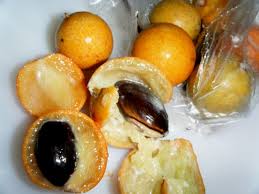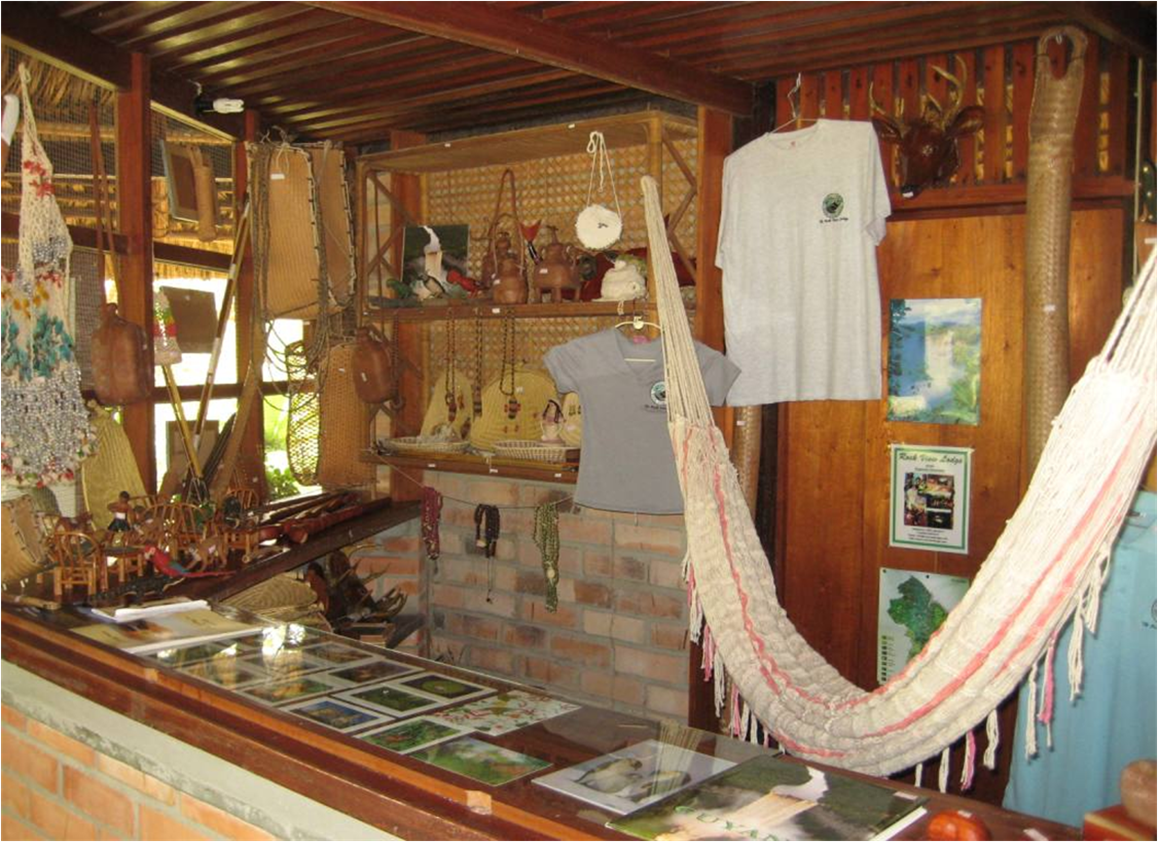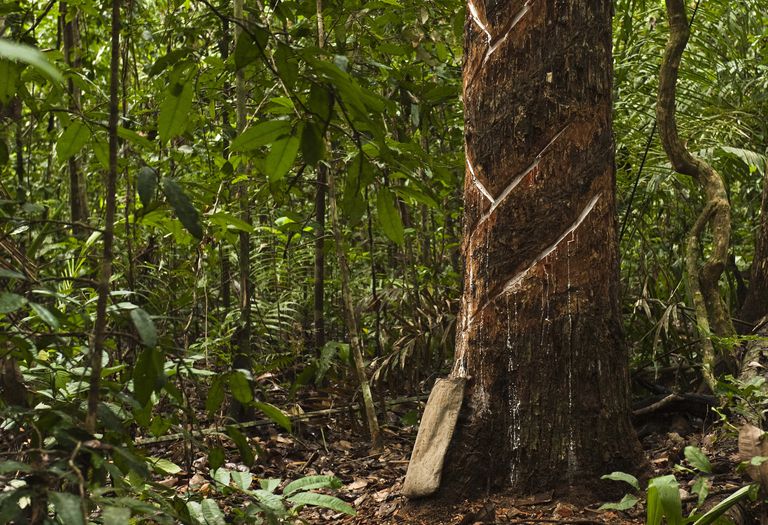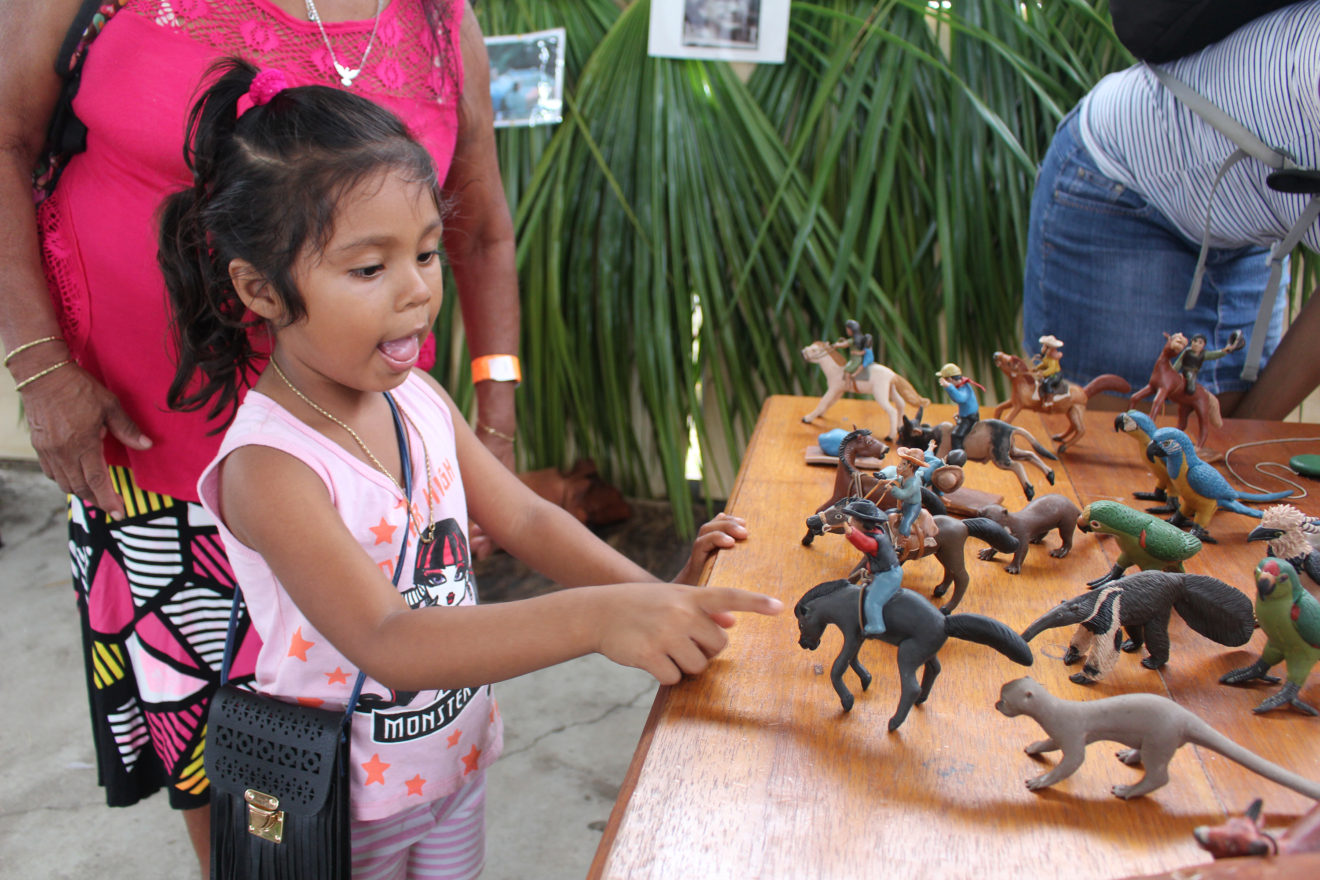Balata- What is it?

The Balata Fruit | https://caribbeanaclassblog.wordpress.com/2016/04/09/the-sharing-of-balata/
Balata, also called Gutta Balata, is a hard rubberlike material made by drying the milky juice produced principally by the bully tree (species Manilkara bidentata) of Guyana and the West Indies. The tree is tapped by cutting zigzag gashes in the bark and collecting the latex in cups, to be coagulated in trays. Like gutta-percha, balata is inelastic, tough, leathery, and water-resistant, and it softens when heated. It is often used as a substitute for the more expensive gutta-percha, chiefly in the manufacturing of golf balls and machine belting.
About Balata

Rock View Lodge Craft Shop with Balata Products | https://rockviewlodge.com/culture/rupununi-crafts/
Balata grows up to 30–45 m (98–148 ft) tall. The leaves are alternate, elliptical, entire, and 10–20 cm (3.9–7.9 in) long. The flowers are white, and are produced at the beginning of the rainy season. The fruit is a yellow berry, 3–5 cm (1.2–2.0 in) in diameter, which is edible; it contains one (occasionally two) seed(s). Its latex is used industrially for products such as chicle.
The tree is harvested from the wild as a source of food, medicines, latex and wood. The latex makes an excellent quality rubber and the tree is sometimes grown for this purpose. Although growth is slow, balata is also cultivated for shade and timber.
Scientific Classification
Balata comes from the species Manilkara bidentata which is from the family Sapotaceae.
History of Balata & Economic Potential
British Guiana was the earliest and longest commercial producer of balata among the Guianas. According to “Tropical Forests of the Guiana Shield: Ancient Forests in a Modern World”, edited by D. S. Hammond, almost 28,000 t was produced between 1893 and 1988, though commercial production of balata ceased in 1982.
While indigenous populations had long used balata to make balls for playing games, temporary tooth fillings and for carving decorative art work such as figurines, the discovery of a “rubber tree” boosted the economic activity in British Guiana. This is so since worldwide demand for rubber intensified for machinery belting; to cover submarine telegraph cables, as well as for the newly invented motor industry.
Incisions are made on the trees which are then “bled” or “milked” for the sap. This is known as balata bleeding. The persons who carry out this activity are commonly called “balata bleeders”.

A balata tree being tapped for its latex-like sap. Danita Delimont/Gallo Images/Getty Images
According to some accounts, early balata bleeding was carried out in Pomeroon in the North West District but this quickly declined as the trees were illicitly cut down rather than bled by incisions.
Most of the balata bleeding in Guyana took place in the foothills of the Kanuku Mountains in the Rupununi. It is estimated that nearly half of the indigenous male population of the Rupununi district was employed in balata bleeding by 1930.
Karanambu (Karanambo) in Rupununi, is said to have been founded as a balata gum collection station in 1927 by Edward “Tiny” McTurk.
Mr D. Melville of Berbice, in his correspondence with the Royal Agricultural and Commercial Society of British Guiana, stated that in Berbice, balata is found in abundance on the low, swampy reefs of Canje.
According to Melville’s correspondence, the Berbice “Bully – tree”, from which the gum was obtained, produces a greater amount of sap during the rainy season; the best time to “tap” for the milk was early morning or a day or two after the full moon.
From 1863 – 1865, balata shipments in Berbice amounted to just over 40,000 lbs.
At the peak of the industry’s earnings from 1890 – 1920, balata revenues accounted for some 80 per cent of total annual government forest product revenue between 1900 and 1925. After 1925, as world demand dropped, this was reduced to 43 per cent; by the 1950s it had amounted to just 2 -3 per cent.
As commercial wireless telegraphy and eventually phone services became widespread, demand for the rubber was curbed, leading to the beginning of the end of the rubber boom. By the 1950s, as synthetic rubber was developed cheaper than natural latex, natural rubber from golf balls to shoes was replaced and the rubber industry buckled.
In British Guiana, by 1919, balata companies were already feeling the squeeze of the drastic depreciation of rubber prices. A.F. White, of Consolidated Rubber and Balata Estates Limited operating on the colony, once requested substantial assistance from the Crown to aid the industry.
However, in the London Gazette of July 1922 notice was published of an Extraordinary General Meeting of the Consolidated Rubber and Balata Estates Ltd. to be held for the purpose of officially liquidating the company which could not, “by reasons of its liabilities… continue its business…”
In “Tropical Forests of the Guiana Shield: Ancient Forests in a Modern World” it is noted that commercial bleeding of the balata tree led to some 900,000 to 4.8 million trees being killed across the major producing regions of the country during its 125-year-old history of balata production.
Main Uses of Balata
Create golf balls
In the timeline of golf balls, balata balls arrived on the scene in the early 1900s. Spalding began producing golf balls with balata covers in 1903.
Create furniture
The tree is a hardwood with a red heart, which is used for furniture and as a construction material where it grows. Locals often refer to it as bulletwood for its extremely hard wood, which is so dense that it does not float in water. Drilling is necessary to drive nailed connections. In trade, it is occasionally (and incorrectly) called “brazilwood”.
Edible fruit
The fruit, like that of the related sapodilla is edible.
Medicinal benefits
The balata leaves are used for treating paralysis of the limb. In addition, a latex obtained from the stems is used as an effective cure for dysentery
Article References
- https://www.britannica.com/topic/balata
- https://www.encyclopedia.com/science-and-technology/chemistry/organic-chemistry/balata
- http://imagesguyana.blogspot.com/2017/04/bleeding-bully-tree-for-balata.html
- https://www.guyanatimesinternational.com/?p=36701
- http://tropical.theferns.info/viewtropical.php?id=Manilkara+bidentata
- Main Image: Using balata to create art, Stabroek News 2017, https://www.stabroeknews.com/2017/the-scene/06/17/using-balata-create-art/
Discover more from Things Guyana
Subscribe to get the latest posts sent to your email.







